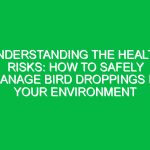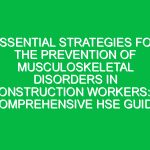In the realm of construction, ensuring the integrity and safety of structures is paramount. Radiographic testing (RT), a non-destructive testing method, plays a crucial role in identifying defects and ensuring materials meet the highest standards. However, while RT is indispensable for quality assurance, it also poses potential health risks due to radiation exposure. This article delves into essential radiation safety tips for construction sites utilizing radiographic testing, aiming to safeguard workers and the environment.
Understanding Radiographic Testing and Its Importance
Radiographic testing involves the use of either X-rays or gamma rays to view the internal structure of a material without damaging it. This technique is invaluable in construction for detecting hidden flaws such as cracks, voids, or inclusions in welded joints and materials. By ensuring these materials are defect-free, RT contributes significantly to the safety and longevity of construction projects.
The Risks Associated with Radiographic Testing
Despite its benefits, the radiation used in RT can pose serious health risks if proper safety measures are not in place. Prolonged or excessive exposure to radiation can lead to acute health issues and increase the risk of long-term conditions such as cancer. Therefore, it’s crucial for construction sites employing RT to adhere strictly to radiation safety protocols.
Key Radiation Safety Tips for Construction Sites
To maximize protection against radiation exposure during radiographic testing, construction sites should implement the following safety tips:
1. Conduct a Risk Assessment
Before beginning any radiographic testing, conduct a thorough risk assessment to identify potential hazards and determine the necessary safety measures. This assessment should consider the type of radiation, the duration of exposure, and the proximity of workers to the source.
2. Implement Strict Access Control
Restrict access to areas where radiographic testing is taking place. Only personnel who are essential to the testing process and have received radiation safety training should be allowed in these areas.
3. Use Adequate Shielding
Employ appropriate shielding materials, such as lead barriers, to absorb radiation and prevent it from reaching areas occupied by workers. The type and thickness of the shielding material should be based on the specific radiation source used in the testing.
4. Wear Personal Protective Equipment (PPE)
Ensure that all personnel involved in or near radiographic testing wear suitable personal protective equipment, including lead aprons, thyroid shields, and radiation badges. These badges monitor radiation exposure levels and help ensure they remain within safe limits.
5. Provide Comprehensive Training
Offer extensive training on radiation safety to all workers on the construction site, not just those directly involved in radiographic testing. This training should cover the basics of radiation, the potential health risks, and the specific safety protocols to follow.
6. Establish Safe Work Procedures
Develop and implement detailed work procedures for radiographic testing, including safety checks, communication protocols, and emergency response plans. These procedures should be regularly reviewed and updated as necessary.
7. Monitor Radiation Levels
Use radiation detection and monitoring equipment to continuously assess radiation levels in and around the testing area. This will help ensure that exposure levels remain within safe limits and that protective measures are effective.
8. Limit Exposure Time
Minimize the time workers spend in areas where radiographic testing is being conducted. Plan work schedules to ensure that exposure is as low as reasonably achievable (ALARA principle).
9. Regular Health Check-Ups
Provide regular health check-ups for workers involved in radiographic testing to detect any potential effects of radiation exposure early. This proactive approach can help prevent long-term health issues.
10. Follow Regulatory Guidelines
Adhere to all local and international regulations and guidelines related to radiation safety in construction. Compliance not only ensures the safety of workers but also protects the construction company from legal repercussions.
Conclusion: Prioritizing Safety in Radiographic Testing
Radiographic testing is a critical component of quality assurance in construction, offering a non-destructive means to inspect materials and structures. However, the use of radiation necessitates stringent safety measures to protect workers and the environment from potential harm. By conducting risk assessments, controlling access, using adequate shielding, wearing appropriate PPE, providing comprehensive training, establishing safe work procedures, monitoring radiation levels, limiting exposure time, ensuring regular health check-ups, and following regulatory guidelines, construction sites can maximize protection against radiation exposure. Prioritizing safety in radiographic testing not only upholds the health and well-being of workers but also contributes to the successful and ethical completion of construction projects.
Summary of Key Points
- Understand the importance of radiographic testing in construction and the associated risks.
- Conduct thorough risk assessments before beginning radiographic testing.
- Implement strict access control and use adequate shielding to protect against radiation.
- Ensure all personnel wear appropriate personal protective equipment.
- Provide comprehensive radiation safety training to all workers.
- Develop and follow detailed work procedures, including safety checks and emergency plans.
- Monitor radiation levels continuously to ensure they remain within safe limits.
- Minimize exposure time in line with the ALARA principle.
- Offer regular health check-ups for workers involved in radiographic testing.
- Adhere to all relevant regulatory guidelines to ensure compliance and safety.
By embracing these essential radiation safety tips, construction sites can effectively mitigate the risks associated with radiographic testing, ensuring a safer work environment for everyone involved.


